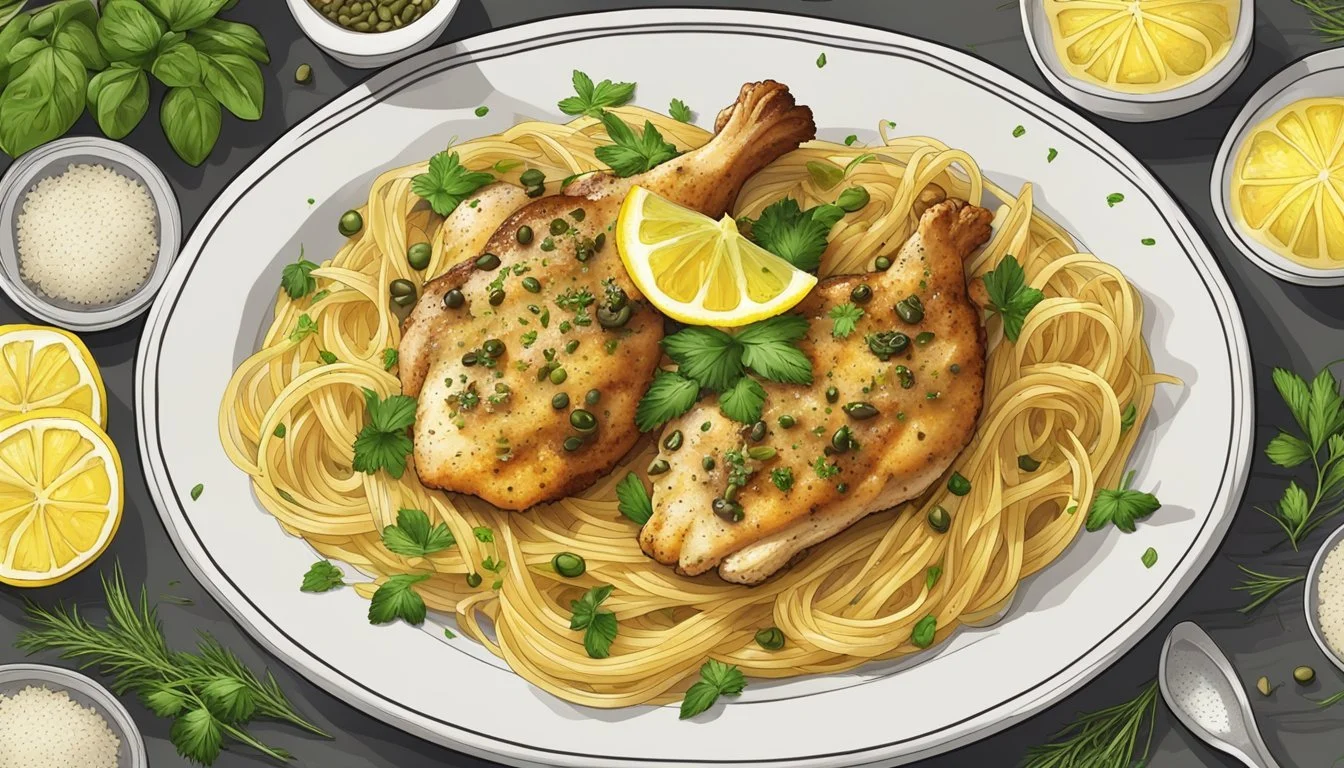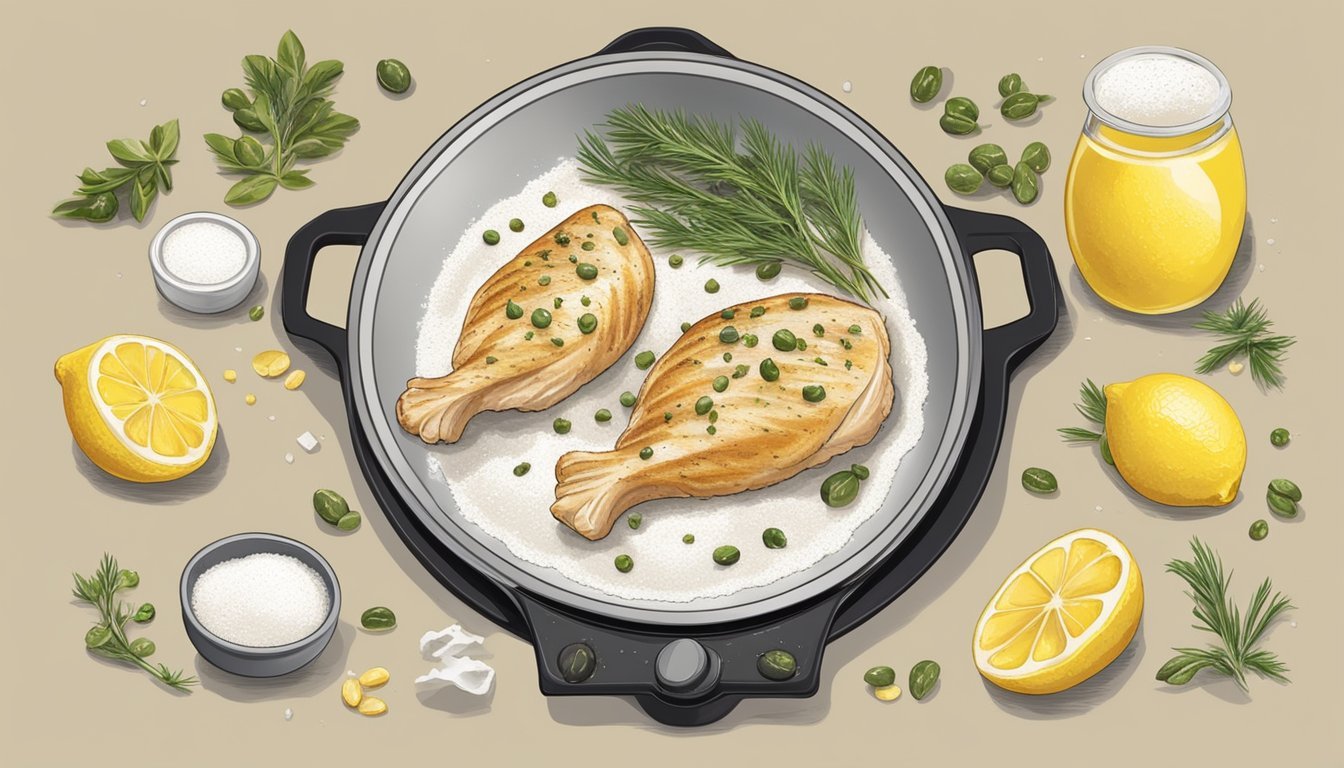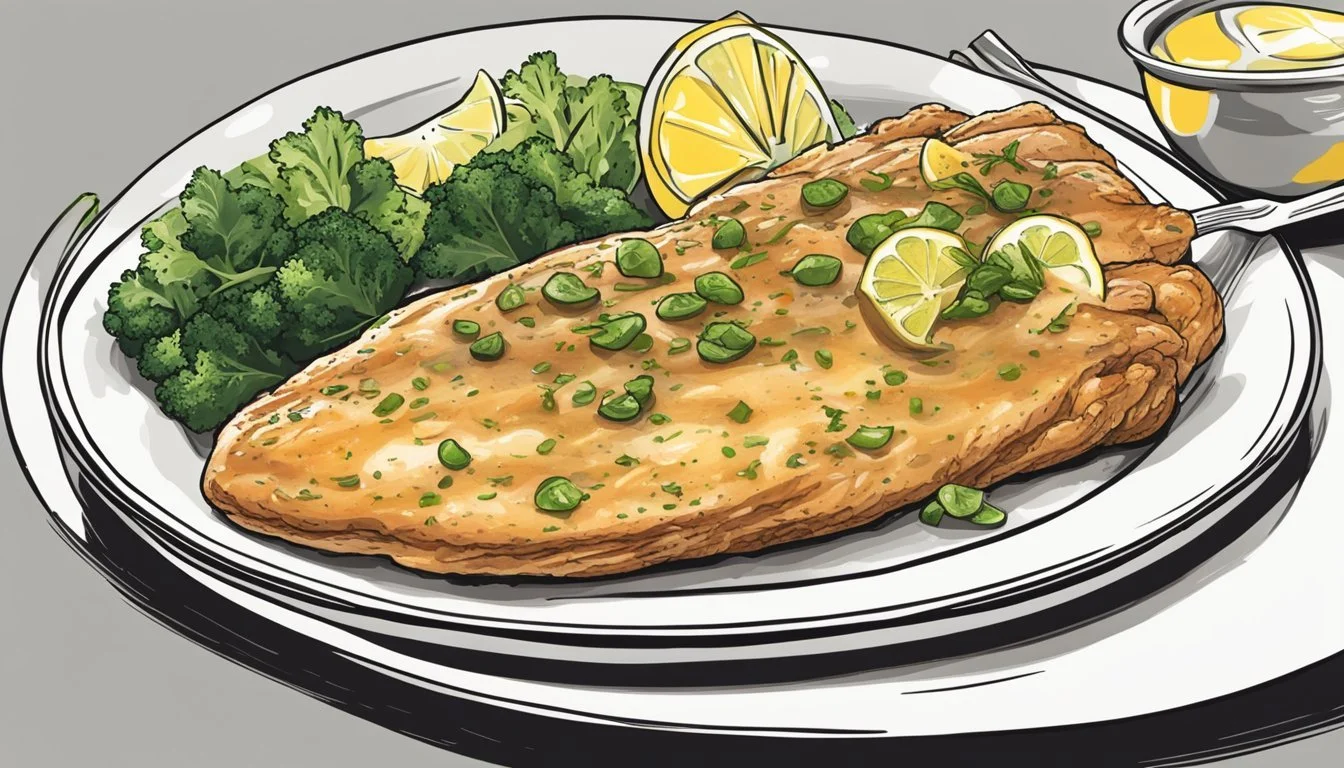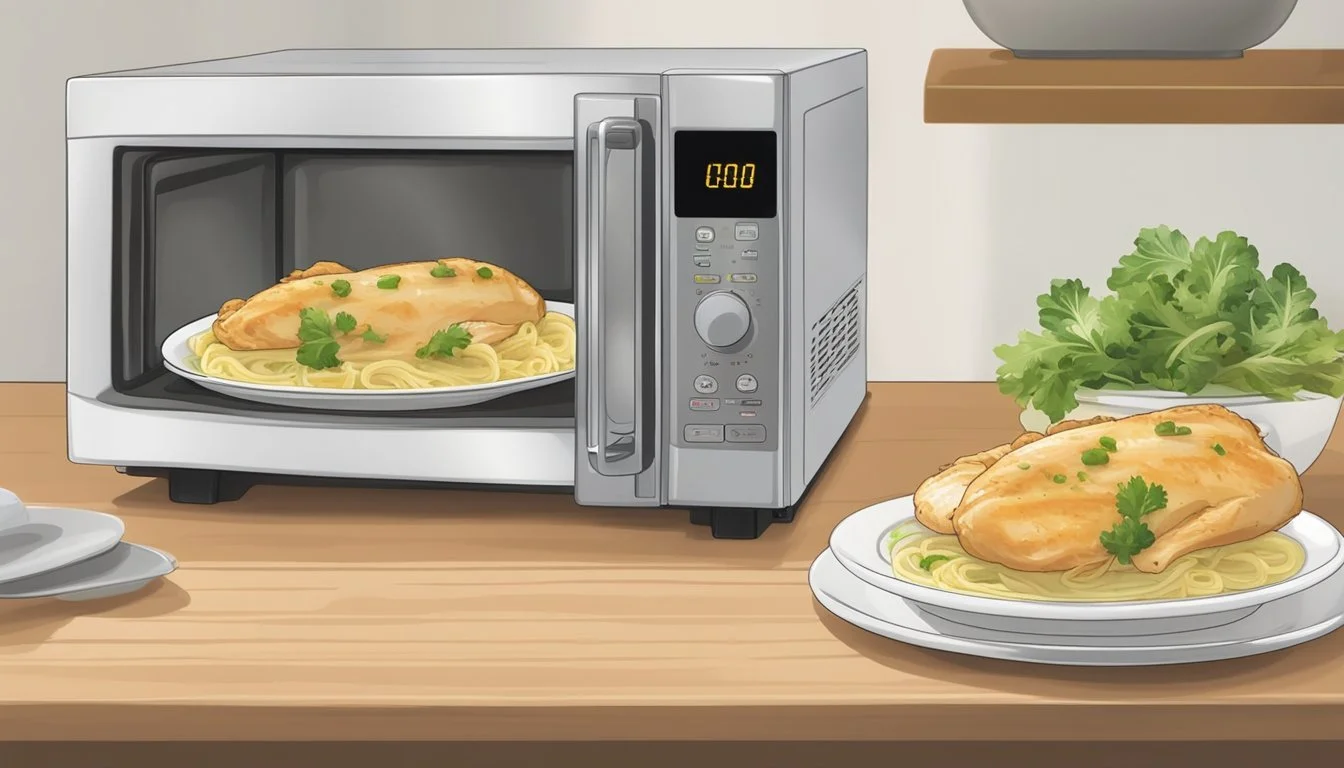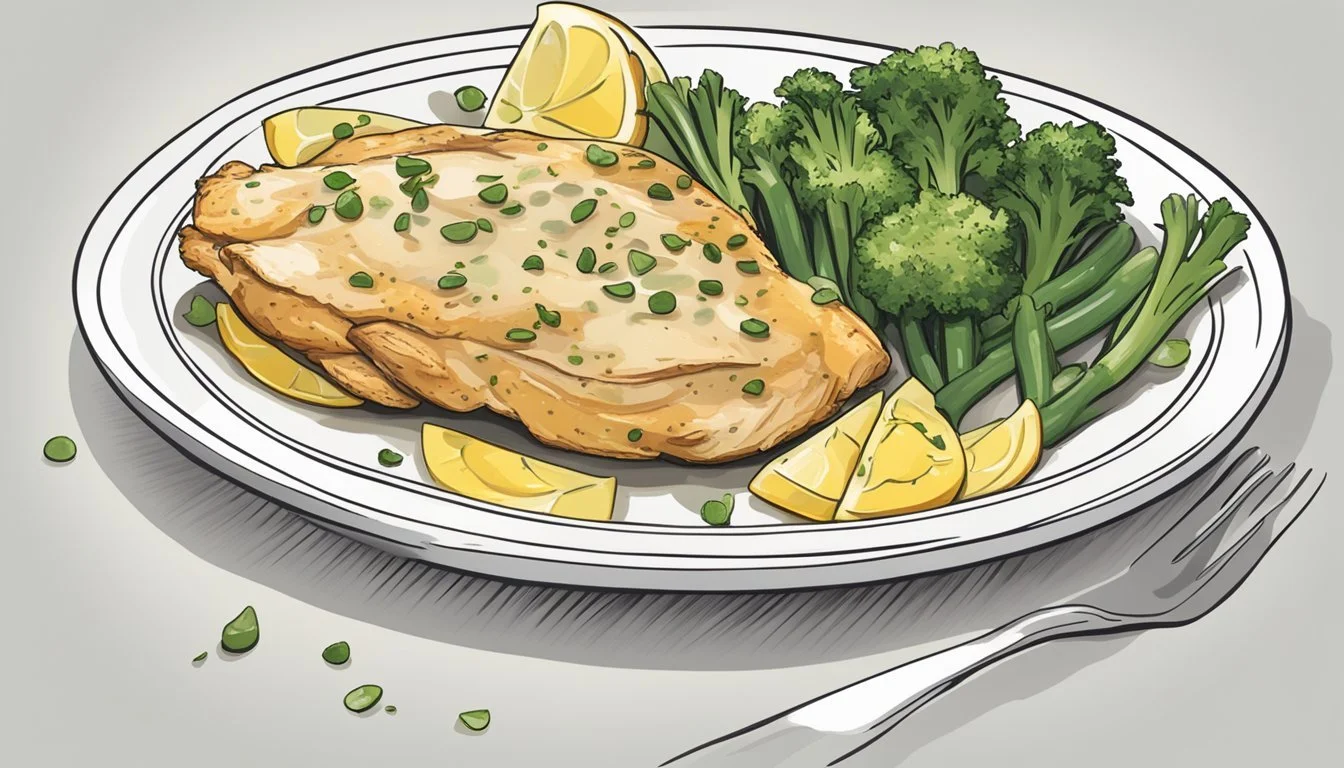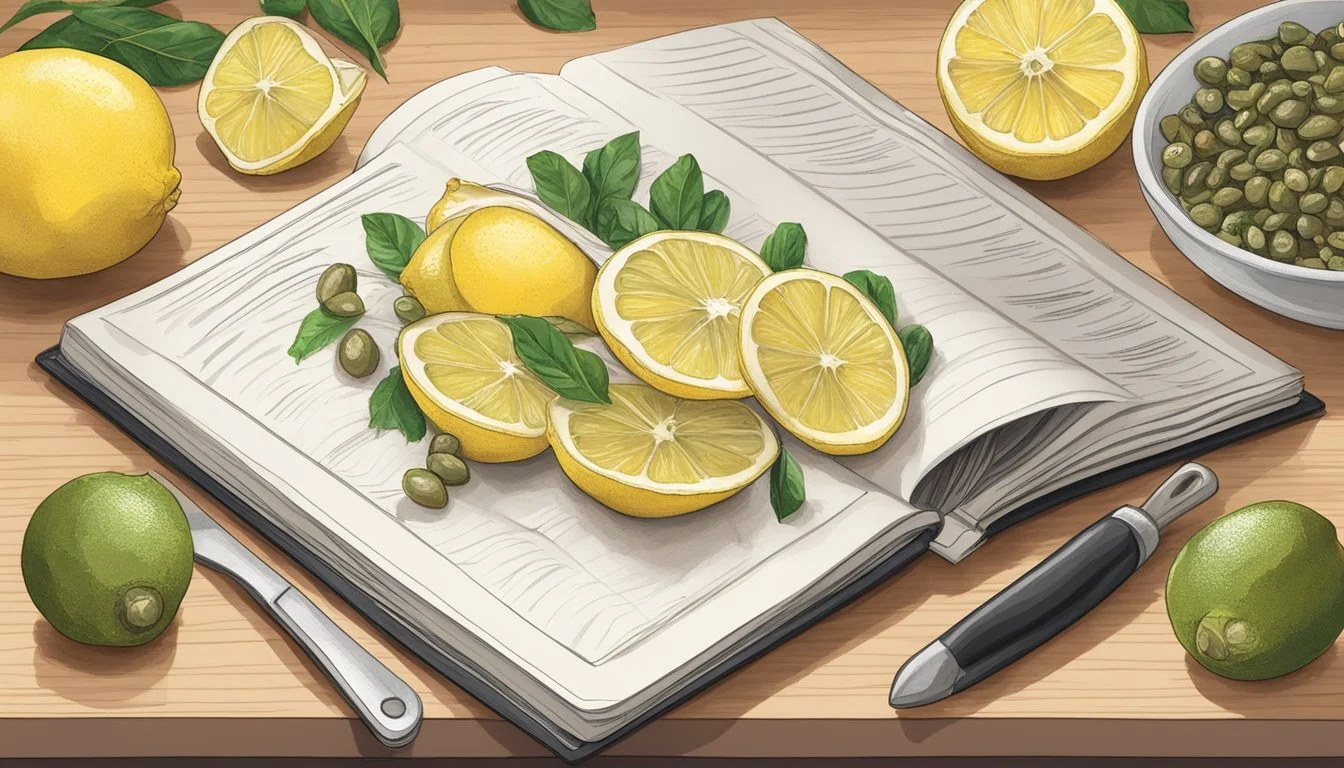How Long Does Chicken Piccata Last?
Storage Tips and Shelf Life
Chicken Piccata, a classic Italian dish, is known for its flavorful and tangy sauce made from lemon juice, capers, and butter, usually served over lightly breaded chicken breasts. When considering how long you can keep this delicious meal, it's key to store it properly. Chicken Piccata can last up to 3-4 days in the refrigerator if stored in an airtight container.
Proper refrigeration ensures that the chicken remains tender and the sauce retains its vibrant flavors. If you need to store it longer, freezing is an option. Freezing can extend its shelf life up to 2-3 months, but keep in mind that the texture of the chicken may slightly change upon reheating.
Whether you make Chicken Piccata ahead of time or have leftovers from a delightful dinner, understanding how to store the dish can help you enjoy its savory flavors safely. With appropriate storage, you can savor the delightful taste of this Italian favorite for several days.
Overview of Chicken Piccata
Chicken Piccata is an Italian classic that stands out due to its simplicity and rich flavor profile. This dish traditionally features chicken breasts that are dredged in flour and pan-fried in olive oil until golden.
A key element in its preparation is the lemon caper sauce, which combines the tartness of fresh lemon juice with the brininess of capers. This sauce is typically deglazed with a splash of white wine and enriched with a pat of butter.
The use of simple ingredients such as chicken broth, lemon slices, and sometimes fresh herbs like parsley enhances the flavors. The chicken is often returned to the pan to soak up the sauce, making it a one-pan chicken dish.
Chicken Piccata can be served over a bed of pasta or with a side of steamed vegetables. The balance between the tangy lemon, savory chicken, and capers makes it a versatile recipe that is both comforting and elegant.
In summary, Chicken Piccata is not only easy to prepare but also a delightful way to enjoy a burst of Italian flavors through its combination of simple ingredients.
Preparation Techniques
Successful preparation of chicken piccata involves precise steps that enhance the flavor and texture of the dish. Key techniques include dredging and browning the chicken cutlets, and creating a flavorful piccata sauce.
Dredging and Browning
Begin by preparing the chicken cutlets. Use all-purpose flour mixed with a pinch of salt and pepper for dredging. Coat each chicken cutlet evenly in the flour mixture. This step is crucial as it helps in creating a crispy exterior when browned.
In a large skillet, heat a combination of olive oil and unsalted butter over medium-high heat. This fat combination ensures a rich and golden crust. Add the floured chicken cutlets to the skillet and cook until they are golden brown on both sides. Remove the chicken from the skillet and set it aside.
Creating the Piccata Sauce
To make the piccata sauce, start by deglazing the skillet with dry white wine. This helps in lifting the flavorful bits stuck to the bottom of the pan, known as the fond. Let the wine reduce for 2-3 minutes.
Add chicken broth, lemon juice, and capers to the skillet. Simmer the mixture until it thickens slightly. Return the browned chicken cutlets to the skillet and coat them with the sauce. Allow them to cook for a few more minutes until they reach an internal temperature of 165°F (74°C).
Serve immediately with a garnish of freshly chopped parsley and a touch of black pepper for an added layer of flavor.
Cooking and Serving Suggestions
Chicken piccata is a delightful dish that can be enhanced with perfect cooking techniques, complementary side dishes, and thoughtful presentation. Master these elements for an unforgettable meal.
Best Practices for Cooking Chicken Piccata
To ensure the chicken piccata is flavorful and tender, start with high-quality chicken breasts. Marinate the chicken in olive oil, lemon juice, salt, and pepper for at least 30 minutes. This step imbues the meat with a zesty flavor profile.
When cooking, dredge the marinated chicken in flour seasoned with additional salt and pepper. This creates a light, crispy coating. Heat extra-virgin olive oil and butter in a skillet over medium-high heat. Sauté the chicken breasts until golden brown, about 3 minutes per side, ensuring they're cooked through without becoming dry.
After cooking, transfer the chicken to a baking dish, pour over the piccata sauce made from lemon juice, chicken broth, capers, and parsley, and bake at 375°F (190°C) for 20-25 minutes.
Suitable Accompaniments and Side Dishes
Chicken piccata pairs wonderfully with a range of side dishes. Angel hair pasta is a classic choice, as it absorbs the lemony sauce beautifully. Alternatively, serve the chicken over rice for a heartier option.
Consider roasted or steamed vegetables such as broccoli, asparagus, or even artichoke hearts. These not only add color but also complement the flavors of the chicken piccata. Sun-dried tomatoes and Italian parsley can be incorporated into salads to provide a fresh counterpoint to the rich main dish.
For additional side options, a mixed green salad with a light vinaigrette or roasted vegetables like carrots and bell peppers can add both texture and taste variety.
Presentation and Garnishing
Presentation plays a crucial role in elevating the dining experience. Serve the chicken piccata on a large, elegant serving platter. Place the cooked chicken breasts at the center, then pour the remaining sauce over them.
Garnish with a sprinkle of freshly chopped parsley and a few lemon slices for a burst of color. To add a touch of indulgence, grate Parmesan cheese over the dish.
For a complete plate, arrange a bed of angel hair pasta or rice underneath the chicken, with roasted vegetables or salad positioned attractively around the edges. This ensures an inviting and appetizing presentation.
Storage and Shelf Life
Proper storage is essential to maintain the quality and safety of chicken piccata. This section discusses how to refrigerate, freeze, and select the best containers for storing chicken piccata, ensuring that it remains delicious and safe to eat.
Refrigerating Chicken Piccata
To refrigerate chicken piccata, ensure that it cools to room temperature first. Then, store it in an airtight container to prevent it from drying out or absorbing odors from other foods. It should be kept in the refrigerator at 40°F (4°C) or less. For best quality and safety, consume refrigerated chicken piccata within 3 to 4 days. Do not leave chicken piccata at room temperature for more than 2 hours to prevent bacterial growth.
Freezing and Thawing Instructions
Chicken piccata can be frozen for longer storage. Place it in an airtight container or heavy-duty freezer bag. For optimal taste, consume within 3 to 6 months. When ready to eat, thaw it in the refrigerator overnight. Reheat in a baking dish covered with foil in the oven at 350°F (175°C) until warmed through. To retain moisture, add a few tablespoons of chicken broth during reheating. Do not refreeze already thawed chicken piccata as this can affect both safety and quality.
Best Containers for Storage
The best containers for storing chicken piccata are those that provide an airtight seal. Glass containers with tight-fitting lids, heavy-duty freezer bags, or BPA-free plastic containers are ideal. Avoid using containers that are too large, as excess air can lead to freezer burn. Label containers with the storage date to keep track of freshness. For reheating, consider containers that are both microwave and oven-safe for convenience.
Reheating and Repurposing Leftovers
Reheating chicken piccata can be done effectively using several kitchen methods. Leftovers can also be repurposed to create entirely new dishes.
Oven and Stovetop Reheating Methods
Oven: Preheat your oven to 350°F (175°C). Place the chicken piccata on a baking sheet lined with parchment paper or aluminum foil. Bake for 10-15 minutes or until an instant-read thermometer shows it has reached 165°F (74°C). Make sure not to overcrowd the sheet so that the chicken reheats evenly.
Stovetop: Heat a skillet over medium heat with a bit of oil and butter. Add the chicken piccata, and pour in any leftover sauce with a splash of broth to keep it from drying out. Heat for approximately 5-7 minutes, turning occasionally until warmed through. Add lemon juice and garlic cloves for added flavor. Ensure it reaches 165°F (74°C) for safe reheating.
Incorporating Leftovers Into New Meals
Cajun Chicken Pasta: Slice the leftover chicken piccata into strips. Cook pasta according to package instructions. In a skillet, sauté bell peppers and onions. Add the sliced chicken, pasta, and a creamy Cajun sauce. Heat until everything is well combined and warm.
Meal Prepping: Divide the chicken piccata into meal prep containers with a side of vegetables and rice. Store in the fridge for quick and balanced lunches throughout the week.
Make Ahead Meals: Prepare a chicken piccata casserole. Layer the chicken with pasta, cheese, and extra sauce in a baking dish. Cover and store in the refrigerator for up to two days. When ready to eat, bake in a preheated oven at 350°F (175°C) for 20-25 minutes.
Quick and Easy Salads: Chop the chicken into bite-sized pieces and mix it with fresh greens, cherry tomatoes, and a light vinaigrette. This transforms the leftovers into a refreshing salad.
Detailed Nutritional Information
Chicken Piccata is a flavorful dish that can fit within a balanced diet. It typically includes boneless, skinless chicken breasts, olive oil, butter, lemon juice, capers, and fresh thyme.
Nutritional Breakdown Per Serving:
Calories: Approximately 225-490 calories
Protein: Around 26 grams
Total Fat: Ranges from 10 to 38 grams
Saturated Fat: About 14 grams
Polyunsaturated Fat: Approximately 3.2 grams
Monounsaturated Fat: Around 18 grams
Carbohydrates: About 8 grams
Sugars: 1 gram
Dietary Fiber: 0 grams
Sodium: 310-700 milligrams
Micronutrients:
Vitamin C: 10-20 milligrams, thanks to the lemon juice
Calcium: 15-30 milligrams
Ingredients Contribution:
Boneless, Skinless Chicken Breasts: High in protein and relatively low in fat
Olive Oil: Adds monounsaturated fats, beneficial for heart health
Butter: Contributes to the saturated fat content
Fresh Thyme: Adds minimal calories but enhances flavor and aroma
Cornstarch: Often used for thickening the sauce, adds slight carbohydrate content
Each ingredient plays a role in defining the nutritional profile of Chicken Piccata, offering a well-rounded dish rich in protein and moderate in healthy fats, with a touch of essential vitamins and minerals.
Tips on Selecting Ingredients and Variations
When preparing chicken piccata, choosing quality ingredients can make a significant difference. Consider the following points for selecting the best ingredients and exploring different variations.
Choosing Quality Chicken
For the best results, use boneless skinless chicken breasts. These cutlets are lean and cook evenly. Ensure they are fresh and free from discoloration or unpleasant odors. A sharp knife is essential for slicing chicken into even pieces. Many Italian restaurants also use boneless chicken breast for this dish, given its texture and flavor.
Pound the chicken to about a 1/4-inch thickness for even cooking. Season generously with salt and pepper before dredging in flour. Quality ingredients create a better base for the lemon-butter sauce.
Alternative Ingredients and Substitutes
For those who want to experiment, consider substitutes like green olives for an additional burst of flavor. For a different taste profile, use chardonnay or pinot grigio instead of the traditional white wine. Opt for homemade chicken stock for deeper flavor, or low-sodium store-bought versions if time is limited.
In place of traditional flour, almond flour can be used for a nutty taste. Fresh parsley is a vibrant addition, enhancing the dish's freshness.
Variations for Dietary Restrictions
Chicken piccata can be adapted to fit various dietary needs. For gluten-free diets, substitute regular flour with a gluten-free flour blend. Low-sodium chicken stock is an excellent choice for those watching their salt intake.
Herb-based variations can cater to different tastes. Add fresh herbs like thyme or rosemary to enhance the lemon-butter sauce. Vegetarians can replace chicken with firm tofu or cauliflower steaks, ensuring they are cooked thoroughly.
Overall, the dish's adaptability makes it suitable for a wide audience with diverse preferences and dietary requirements.
Chicken Piccata vs. Other Italian Classics
Chicken Piccata stands out among Italian classics for its tangy lemon and caper sauce, setting it apart from other popular chicken recipes. Comparisons with Chicken Marsala and other Italian chicken dishes highlight these differences in flavors, preparation methods, and serving styles.
Comparison with Chicken Marsala
Chicken Piccata and Chicken Marsala are both beloved Italian dishes but differ significantly in flavor profiles and ingredients. While Chicken Piccata features a lemon, caper, and butter sauce, Chicken Marsala uses a rich, savory sauce made from Marsala wine and mushrooms.
Both recipes start with chicken cutlets, but Chicken Piccata often calls for a lighter flour dredge. Chicken Marsala may use a similar dredge but leans towards a more robust sauce.
Chicken Piccata offers a bright, tangy taste, ideal for those who enjoy citrus flavors. In contrast, Chicken Marsala provides earthy, deep flavors from the mushrooms and wine, appealing to those who prefer a heartier dish. Both are simple to prepare, yet each offers a unique twist on chicken cutlets.
Comparison with Other Italian Chicken Recipes
Aside from Chicken Marsala, other Italian chicken recipes such as Chicken Parmesan and Chicken Scarpariello show the versatility in Italian cuisine.
Chicken Parmesan involves breaded chicken cutlets topped with marinara sauce and melted mozzarella, offering a rich, comforting meal. On the other hand, Chicken Piccata’s lemony and caper-studded sauce is lighter and more refreshing.
Chicken Scarpariello, known for its bold flavors from sausage, peppers, and vinegar, provides a spicy and tangy experience. Unlike Chicken Piccata, it often uses bone-in chicken thighs, making it heartier. These recipes highlight the variety in Italian cooking, each bringing distinct flavors and textures to the table.
Conclusion
Chicken piccata, when stored properly, can maintain its quality for several days. The cooked chicken cutlets will last 2-3 days in the refrigerator. The lemon sauce can be stored separately and will keep for 4-5 days.
For longer storage, the chicken cutlets can be frozen for several months. It is essential to allow the dish to cool completely before storing it in an airtight container.
To reheat, chicken piccata should be gently warmed on the stovetop or in a microwave-safe dish. Properly reheating will preserve the flavors, though it may affect the crispness of the breading.
When preparing chicken piccata ahead of time, consider combining the components just before serving to maintain texture and taste. If kept within these guidelines, your chicken piccata will remain delicious and safe to consume.


